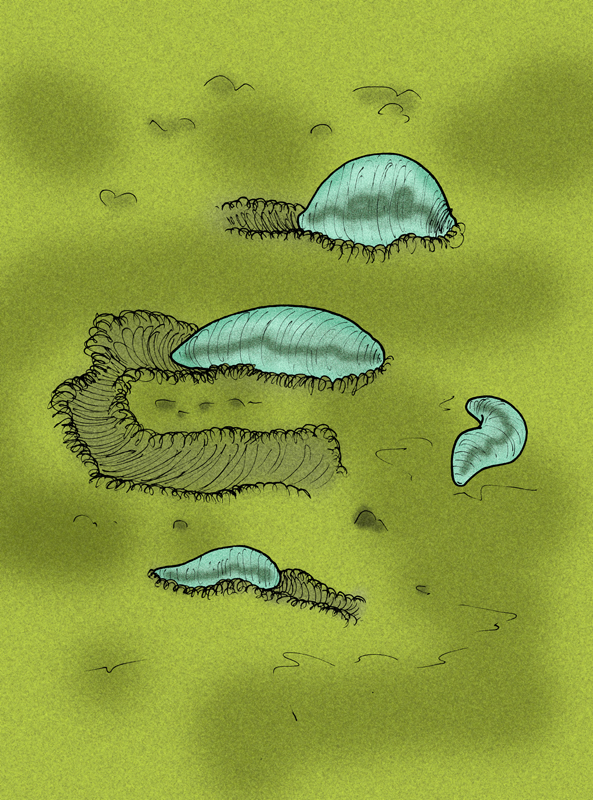The Ancestor of All Animals?
An exciting research published in the Proceedings of the National Academy of Sciences (PNAS) in 2020 revealed what could be the earliest common ancestor of almost all modern animals, a merely 2-7 mm long and 1-2.5 mm wide (smaller than a grain of rice) Ikaria wariootia.
Unlike most Edicaran biota (635–541 million years ago), I. wariootia is a bilaterian (i.e. animal with symmetrical sides, back and belly). All animals are bilaterians except sponges (Porifera), ctenophores, cnidarians and placozoans.
The finding sheds light on the origins of the oldest fossilised burrows on Earth, Helminthoidichnites, which signal the the rise of bilaterian motility in the Edicaran. The burrows have V-shaped ridges, which could mean that I. wariootia moved like a worm by contracting the muscles across its body.

Reconstruction credit: Apokryltaros
| Scientific name: | Ikaria wariootia |
| Clade: | Bilateria |
| Clade: | Nephrozoa |
| Scientific reading: |